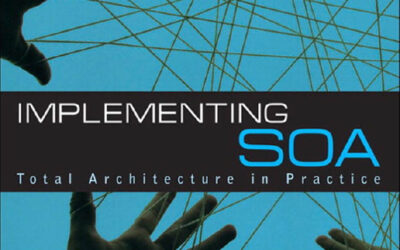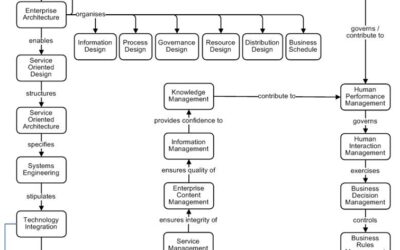“Scope” is an “everybody knows.” And that may be the biggest problem. Consider this example: After reviewing a presentation on a major initiative (tens to hundreds of millions of dollars), one senior executive proclaimed that with scope now established the need was to work specific areas. Another executive, reviewing the very same material, pointed out that it was, of course, clear that scope was still not understood!
Articles by: BPMInstitute.org
Modernizing Legacy Applications for SOA
In my last article titled “Strategies for developing a roadmap for your SOA initiative”1 I discussed laying out a roadmap that shows how to get from the current state to the envisioned future state. One method many companies use when planning their SOA journey is to create a new presentation layer while leaving the legacy backend systems in place. This practice can be called modernizing or rejuvenating legacy systems.
Before we get too far into the discussion, let me state that the end game for SOA should not be to modernize old systems.
Implementing SOA: Total Architecture in Practice
If you are an architect responsible for a service-oriented architecture (SOA) in an enterprise, you face many challenges. Whether intended or not, the architecture you create defines the structure of your enterprise at many different levels, from business processes down to data storage. It defines the boundaries between organizational units as well as between business systems. Your architecture must go beyond defining services and provide practical solutions for a host of complex distributed system design problems, from orchestrating business processes to ensuring business continuity.
BPM: Selecting the Right Tool
In my last article I talked about BPM and Software as a Service. As organizations look at SaaS capabilities of a BPM tool, there are many other features and capabilities that must also be taken into account and evaluated prior to making the final selection. Myriad of features available to be evaluated against current investments can make the BPM tool selection a bit challenging.
Utilizing Metrics for Enhanced Execution
Execution, simply put, is the efficient and timely delivery of planned results. It is always vital in business but never more than in this current economic environment.
Many an organization will “talk” the execution game but they fall far short on the “walk” side of the equation. It’s almost as if it’s an alien concept. I believe the primary reason is that the execution is based upon pure energy – action that is deliberate, focused and consistent. And, unlike planning, execution does not occur in a controlled environment but instead in the real world where events are c
Formal Definition of the Process to be Automated (Second Pillar)
“If we want to enter into a scheme of automated process implementation, it is necessary to consider at least the formal definition of the activities, actors, the output and input documents for each activity, the integration levels, the routing rules, etc. of the process to be automated. Formal definition refers to the elaboration of basic documentation for the initial phase of process automation according to the chosen methodology.
Process-oriented Systems Paradigm for the Process Age
In the previous article “Integrated Business Management in the Process Age”, I discussed the concepts that will shape businesses in the Process Age. In this article I will discuss how process-oriented concepts and systems engineering practices can be used in a process-oriented engineering methodology.
-o00o-
In the previous article “Integrated Business Management in the Process Age”, I discussed the concepts that will shape businesses in the Process Age. In this article I will discuss how process-oriented concepts and systems engineering practices can be used in a process-oriented engineering methodology.
-o00o-
BPMS Watch: Engaging the Business in BPM
As BPM begins to expand beyond isolated projects to mainstream programs at the division or enterprise level, there is a need to engage a far greater number of business people in the effort. That’s not easy, and achieving it is going to require significant change in the way BPM is practiced.
The most important role for business is probably documenting current-state business processes and analyzing them for possible improvement. But conventional practices in this area are inefficient and inherently small-scale.
Bottom Up / Top Down
For those who think about design and innovation, a relatively exotic argument has been going on for a while. The issue is about how best to structure the overall innovation process. Do you look first for the grand concept and then derive details for a full system solution? Or do you first seek individual insights about proposed system functions, environments and users, and then integrate ideas to an overall grand concept? In essence, should the creative process be one of deduction or induction?
BPMS Watch: IBM Takes BPA to the Cloud
“Cool” is not a word I would normally apply to IBM’s BPM software, but for the new BPM BlueWorks offering announced at Impact this week, the term is appropriate. IBM bills BPM BlueWorks as a BPM community in the cloud, and it is that, plus a lot more. Actually, I think its greatest immediate impact could be to transform the market for business process analysis (BPA) tools.



















